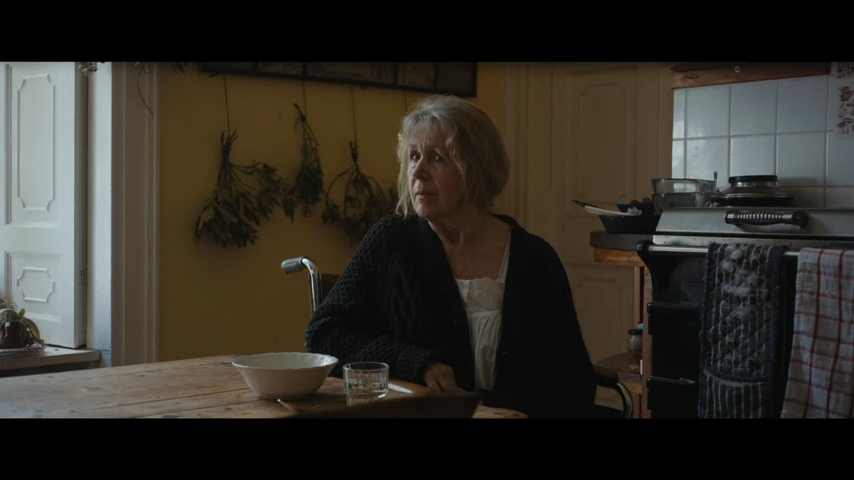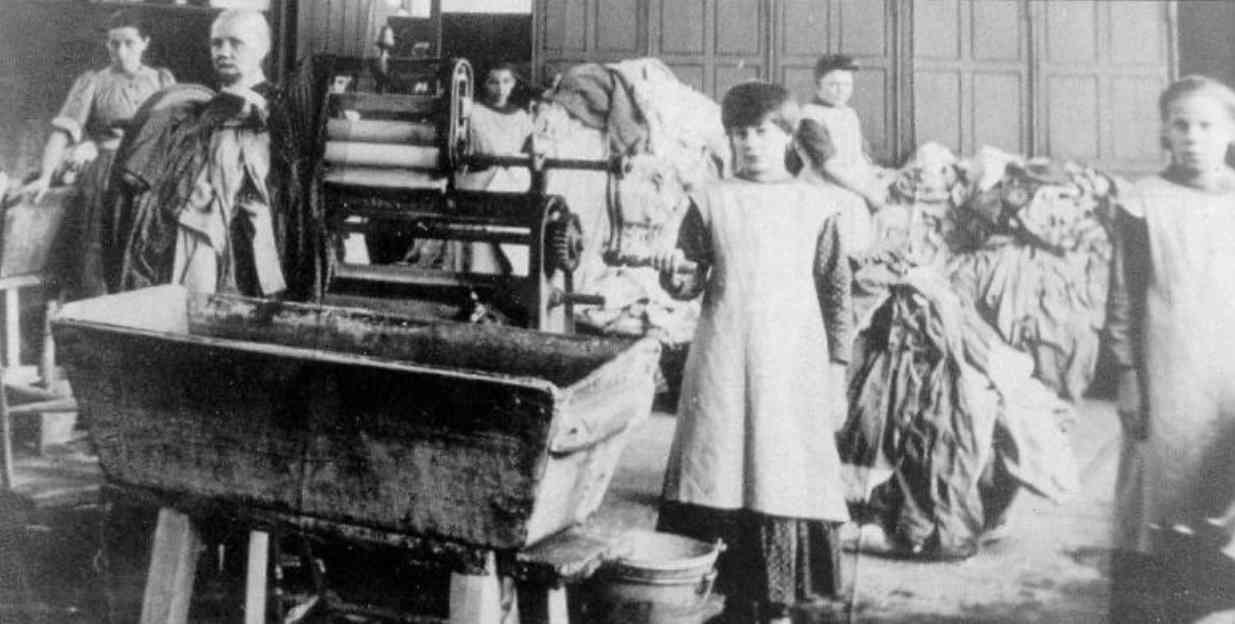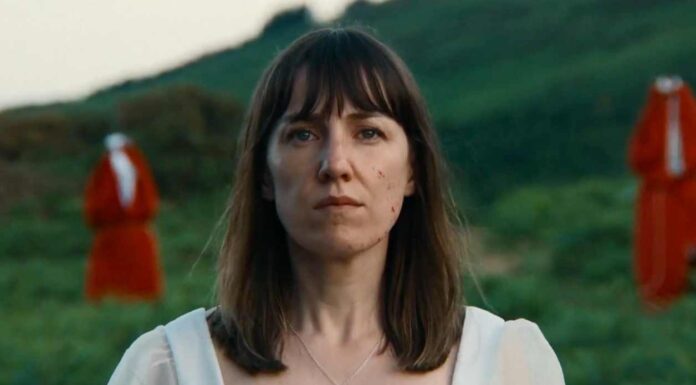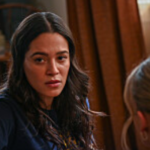Fréwaka is an Irish scary movie that was written and directed by Aislinn Clarke. The movie came out in 2024 and is a mix of supernatural horror and deep emotional trauma. It is set against the dark background of Ireland’s troubled religious history. A lot of the dialogue in Fréwaka is spoken in Irish. The story is told in many layers, the atmosphere is scary, and the movie deals with painful historical truths through a horror lens.
Along with Bríd Ní Neachtain as Peig, Clare Monnelly as Shoo, Aleksandra Bystrzhitskaya as Mila, Charlotte Bradley as Majella, Tara Breathnach as The Mother, and Grace Collender as Young Peig, the movie has a great cast. It’s a story about fear, but each actor adds something different to it. The story is about surviving, trauma, and fear.
Let’s dive into the story of the movie before exploring whether Fréwaka is based on real events.
PLOT OF THE MOVIE FRÉWAKA
In the beginning of Fréwaka, a scary scene from 1973 takes place: a wedding in the country is interrupted by a group of people wearing medieval-style straw masks. That night, bad things happen, and no one knows what will happen to the bride. Before the story starts, this scary beginning sets the scene for a mystery and trauma that build up slowly.
Present day: Shoo (Clare Monnelly) a strong-willed Dublin eldercare worker who just lost her mother, who she had grown apart from. She handles her grief in a cold way by cleaning out her mother’s apartment, which was a mess and full of religious items. The fact that Shoo doesn’t seem to care shocks her pregnant fiancée Mila (Aleksandra Bystrzhitskaya). It’s clear that Shoo has deep wounds from a bad relationship she had with her mother and would rather forget.

Shoo takes on a last-minute job as a live-in caregiver for Peig (Bríd Ní Neachtain), an elderly woman who lives alone in a remote, falling-apart house far from Dublin. She wants to get things done quickly. Peig is weak, has dementia and doesn’t want to take her medicine. As Shoo gets used to living in the falling-apart house, she starts to notice strange things, like strange sounds, strange symbols, and a scary red cellar door with a rusty horseshoe on it. Peig warns her about “them,” weird beings that have something to do with the house’s dark past.
Shoo tries to ignore the scary things that are happening because he is sensible and doubtful, but the house itself seems alive with danger. An odd bond forms between Shoo and Peig over time. The story shows a scary past through Peig’s broken memories and Shoo’s own hallucinations: The same masked people from the beginning of the movie took Peig away on her wedding night. She was sent to a horrible institution where she was abused horribly.
As the story goes on, Shoo realizes that Peig’s pain is a lot like her own. Even though they are decades apart, their lives are linked by cycles of trauma, silence, and systemic abuse that have deep roots in Ireland’s painful past. The supernatural horror in Fréwaka is scary, but what really scares me is how women like Peig and Shoo are treated every day.
From the remote rural setting to the stuffy, almost suffocating interiors, the movie’s atmosphere makes you feel more and more afraid. The scary goat, strange sounds, and visions make it even harder to tell the difference between mental trauma and a real supernatural threat.
By the end, Fréwaka is more than just a ghost story. It’s a powerful story about pain that is passed down, the past that comes back to haunt you, and having the courage to face the truth.
IS FRÉWAKA BASED ON A TRUE STORY?
The story of Fréwaka is not based on a true event. On the other hand, it is based on true events and historical facts in Ireland, especially how the Catholic Church treated women.
The story was written and directed by Aislinn Clarke, who mixed Irish folklore, myths, and real historical trauma. “Fréwaka” comes from the Irish word “Fréamhacha,” which means “roots.” The idea of roots—personal, family, and social—is very important to the story. There is a link between Shoo’s trauma, Peig’s pain, and the harmful traditions that caused them both.

Magdalene Laundries (also called Magdalene Asylums) in Ireland are one of the most important real-life events that shaped the movie. The Catholic Church ran these institutions for women who were thought to have broken social norms. These women included single mothers, victims of abuse, and women who were seen as “troubled.” Many of them had been abused physically, emotionally, or spiritually on the inside. People were forced to work, often without pay, and the conditions were awful.
When the unmarked graves of 155 women were found on the grounds of one of these asylums in 1993, this shameful part of Irish history got attention around the world. The news made a lot of people angry, and the government apologized. But the damage these institutions did is still being felt today.
Fréwaka uses this sense of guilt about the past. It uses typical horror tropes like masked figures, haunted houses, and scary goats, but these are used to show very real fears, like how mothers pass on trauma to their daughters and how society allowed such cruelty to happen in the name of morality.
Clarke herself has talked about how powerful the Church was in Ireland. She said in an interview with Hollywood Reporter that growing up in Ireland, you could not help but feel the Church’s control over everything, from school to health care to family to your own identity. “If you go to any small town, you’ll find a faith healer or someone believed to have special powers,” Clarke said. “These traditions are still alive.”
The masked people who kidnap Peig in the movie represent the cruel treatment of women by society as a whole, without any faces. Shoo is scared not only by ghosts and other supernatural beings, but also by fear, shame, and pain that have been passed down from generation to generation.
Language and identity are also important themes in the movie. Peig is linked to an older, more traditional world because she speaks Irish. Shoo is modern and lives in a city. He speaks English and doesn’t like to think about the past at first. Their trouble communicating shows how tense things are between old and new Ireland as a whole. But through their relationship, the movie shows that to heal the future, we need to understand the past, not forget it.
Even the parts of the stories about children being sold and adopted illegally are based on real events. There were many reports of children being taken from their mothers without their permission and sold for adoption, sometimes overseas, when the Magdalene Laundries were at their busiest.
Even though Fréwaka never shows these events directly, the film has a strong sense of the horror of these kinds of actions. The emotional and historical horrors that are just below the surface are almost more scary than the supernatural horrors.
Even though Fréwaka is a work of fiction, it is based on real Irish history and the terrible trauma that still affects people today. Folklore, personal experience, and historical facts have all been skillfully woven together by Aislinn Clarke to create a story that is both scary and moving.
The movie serves as a reminder that some of the scariest things in the world are not ghosts or monsters, but the systems and institutions that failed a huge number of women in real life. Fear brings these painful truths to light, giving the victims a voice and shedding light on a past that Ireland is still dealing with today.
Fans of complex stories, cultural nuance, and creepy atmospheres will love Fréwaka. It’s a powerful experience that will stay with them long after the credits roll.
Visit tvacute.com again soon for more news, sneak peeks, and in-depth reviews of your favorite movies and TV shows, like Fréwaka.







